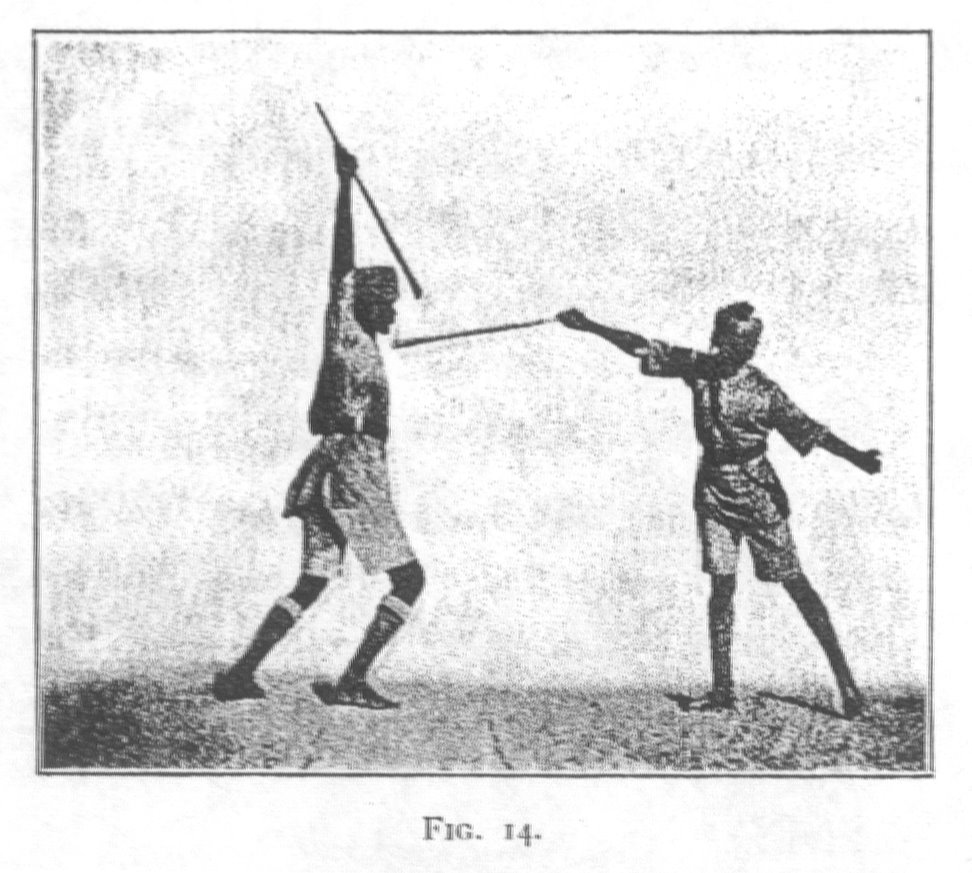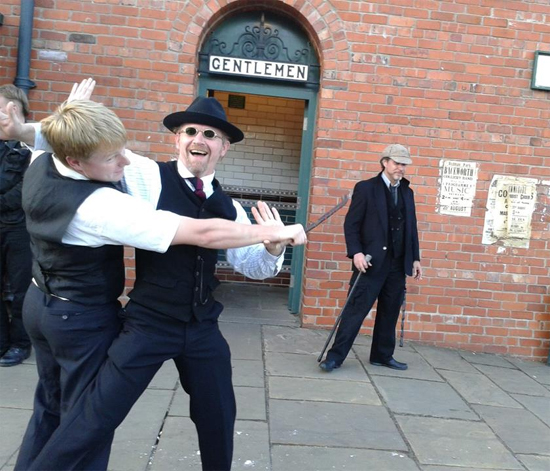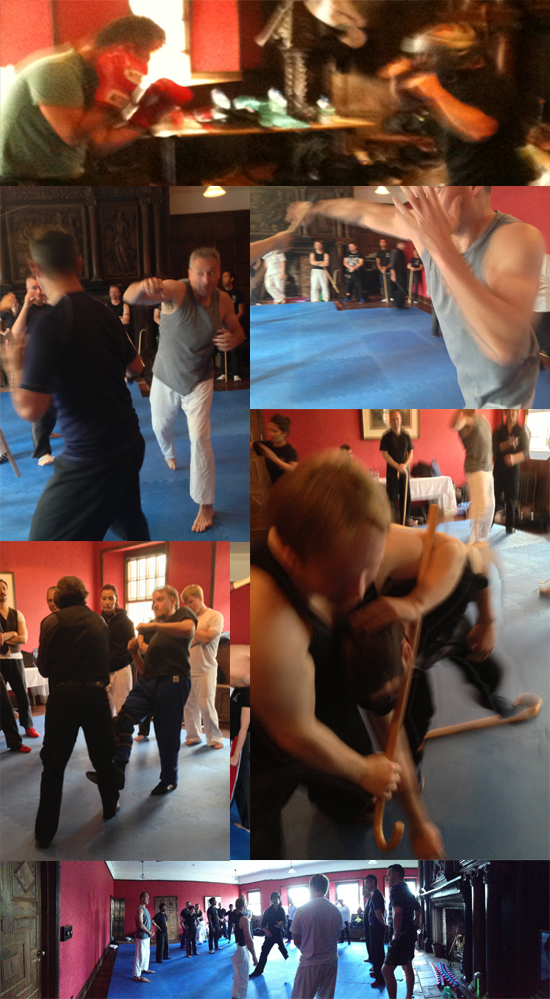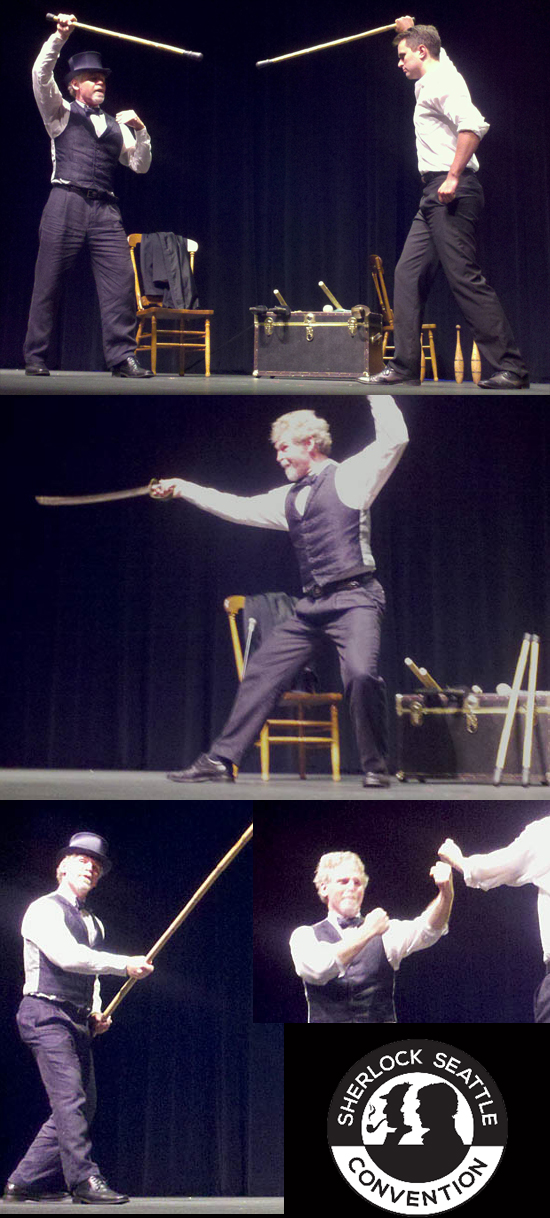Alternating annually between Europe and North America, the Bartitsu School of Arms and Physical Culture is the Bartitsu Society’s international seminar and conference event. The 2013 SoA was held between September 13-15 at Beamish Museum near Newcastle, UK.
Unfortunately, instructor Allen Reed (USA) had to withdraw about one week before the event due to his wife’s sudden illness and instructor/SoA organiser Tony Wolf’s flight from the US to the UK was delayed and then cancelled. Thanks go to instructors James Marwood (UK) and Mark Donnelly (USA), who stepped into the breach and accepted both extra “on the ground” administrative responsibilities and an extra teaching load.
As the Beamish Museum complex includes “Beamish Town” – an entire reconstructed c1900 town street, complete with working tram cars – it was an ideal place to hold a Bartitsu gathering. The School of Arms was established in an upper floor of the Barclay’s Bank Building in Beamish Town, overlooking the main street.
“Beamish kept us immersed in the Edwardian atmosphere even while not training and I think this provided an unquantifiable, but wonderful addition to the proceedings.”
Day 1 began as School of Arms instructors and participants met at the Beamish Museum entrance and then caught a c1900 tram through the countryside to Beamish Town. There they gave a Bartitsu lecture and demonstration for an audience of museum staff and visitors in the Beamish Freemason Hall.
“In the opulent surroundings and with the participants in Victorian costume it was easy to imagine that we were giving a demonstration to the assembled members of the Bath Club!”
“The garotting attack and takedowns onto a hard marble floor provided a compelling spectacle …”
The costumed lecture/demo. was followed by a pleasant casual tour of the museum’s facilities and exhibits.
Day 2 started with a brisk walk to the training hall, followed by a “story warm-up” in which calisthenic exercises were contextualised as part of a Bartitsu-themed narrative.
This was followed by a series of Bartitsu classes progressing from extreme, to long, to punching ranges, with Mark Donnelly leading the stick work and kicking drills while James Marwood taught boxing and jiujitsu atemi-waza.
Participants were encouraged to explore the material, in the spirit of the “combat laboratory” collaboration between practitioners of various different styles at Barton-Wright’s original Bartitsu Club in London circa 1901.
“Professor Donnelly and Mister Marwood lead an excellent course of training. Rather than simply teaching the canonical material they encouraged the participant to take the techniques, some of which they were already familiar with, and experiment with how they slotted into the overall principles and ethos of Bartitsu.”
Later in the day we were honoured by a visit from British martial arts historian Graham Noble, whose collaboration with the late Richard Bowen during the 1990s effectively marked the beginning of modern Bartitsu scholarship. Graham observed the last hour or so of training and then joined the School of Arms staff and participants for a buffet and a social evening at the Sun Inn, an authentic Edwardian era pub and restaurant located just down the street from the School of Arms.
“Over beer and a superb dinner of traditional northern English food, we had some interesting discussions on the nature of the Bartitsu experiment, on what Bartitsu might have become had it continued to scientifically incorporate other martial arts, and on different approaches to studying Bartitsu now by either sticking with the canonical material or continuing to experiment with other contemporary or earlier systems to see where they could be used in gentlemanly self defence.”
Day 3
The third and final day began with a warm-up session led by both instructors and segued into further study of the “building blocks” of Bartitsu. In the morning Mark Donnelly covered stick material, using the stick at closer range, and dealing with an opponent trying to close, drawing from la canne Vigny and from contemporaneous Irish stick fighting material.
In the afternoon James Marwood looked at mixing boxing and atemi strikes before introducing some simple jiujitsu locks and controls. This moved into using these wrist and arm controls to break away from an attacker, finishing with some pressure drills in which a boxer had to try and prevent a grappler from closing.
“In particular I enjoyed looking at the control of distance, and the use of techniques to keep the ruffian at the distance that best suited the defender, for example a defender with a cane using a Savate kick to prevent the assailant closing from an extended measure into punching distance, or using a carefully chosen boxing technique to keep them from closing to grappling range.”
The day and the event ended with a discussion about the open source nature of the Bartitsu revival, an exhortation for people to open their own clubs and encouragement for them to get involved with the Bartitsu Society. The participants departed having built new bridges between clubs and with the sense of camaraderie that is the best feature of gatherings of enthusiasts in any field:
“We covered a tremendous amount of material in two days, sadly more than I’ll be able to retain, but I’m very much looking forward to continuing my own study with a better understanding of the general framework it fits into.”
“It was a really rewarding weekend. Especially good for me, as before this event, the only Bartitsu I’ve been in contact with has been via B-W’s articles and Youtube videos of other study groups. Huge opportunity for me to absorb a very great deal. I was particularly impressed by way that certain movements echoed back and forth between the cane work Mark demonstrated and the strikes James taught.
Really good atmosphere too — no egos, but plenty of opportunity to press ourselves hard if that’s what we wanted to do.”
“As a first look at Bartitsu I enjoyed it enormously and the venue helped bring about a sense of history when taking Bartitsu in its context of when Barton-Wright first started the style. Both instructors were very knowledgeable and skilled and were also very friendly and helpful.”
“All in all a great experience and venue which left plenty of avenues of further exploration for me to look into.”
“It was a fantastic event!”
Special thanks go to instructors James Marwood and Mark Donnelly, Beamish events co-ordinators Stephanie Celino, Lisa Wilkinson and Tanya Wills, as well as to Kathrynne Wolf, Duncan McNulty and SoA organiser Tony Wolf.
The fourth annual Bartitsu School of Arms is scheduled to be held in North America during late August or September of 2014; we hope to see you there!













